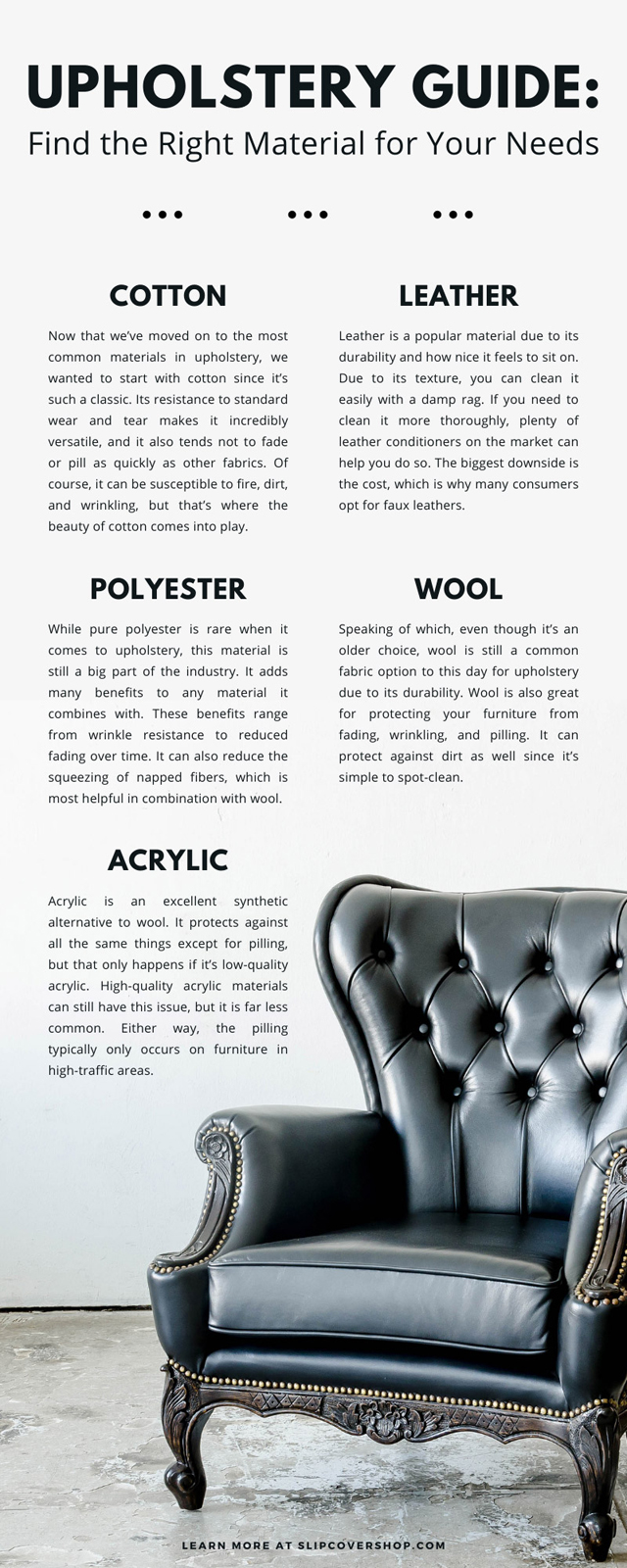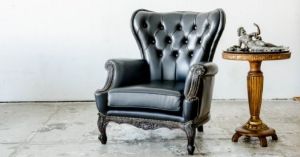The concept of upholstering furniture is nothing new; it’s actually been around since the Middle Ages. It makes sense, though—why would you want to buy something new when you could fix it instead? Granted, in today’s modern world, that concept is becoming less true by the day. Many companies try to make the cost of fixing a product so outrageous that you have no choice but to buy a new one. That’s why the art of reupholstering furniture is an important trade to take advantage of. It’s one of the few areas of the free market that encourages fixing the old, worn-out things in your life rather than replacing them. Whether you go about it yourself or hire a professional, there are a few things you need to know before upholstering your furniture. Here’s an upholstery guide to finding the right material for your needs.
Professional vs. DIY
Before we get into all the various materials that you can use, we need to go over how you should go about your upholstery project. While many people simply let a professional take care of it, DIY is becoming more popular. The main reason for this is that it’s less expensive. However, some people also find it fun and rewarding to upholster furniture themselves. If neither aspect is a concern for you, you’re better off having a professional do it. This option saves you tons of time since the pros will complete the project faster than you would have on your own. Plus, having someone else work on your furniture frees you up to do something you truly enjoy. The other major upside is that professional work is much more effective than you could ever be unless you have a lot of previous experience. If you go DIY, you can rent tools similar to what the pros use, but their expertise will still produce better-quality results than your amateur attempts. The worst part is you can’t save time and money with either of these choices. That’s where our secret option comes in: slipcovers. If you have deeper issues with your furniture, these won’t change any of that, but they are an excellent option for those who want to remove an unsightly stain or fix the fabric that’s falling apart. While slipcovers don’t really remedy either of those problems, they do hide them away, increasing the longevity of your furniture for less time and money. While we still recommend upholstering your furniture if you have a real problem that needs fixing, we can’t stress enough how quick and easy buying slipcovers are. If this seems like the best solution for your problem, be sure to check out our selection of custom slipcovers. They even come in many of the materials that we will discuss throughout the rest of this post.
Cotton
Now that we’ve moved on to the most common materials in upholstery, we wanted to start with cotton since it’s such a classic. Its resistance to standard wear and tear makes it incredibly versatile, and it also tends not to fade or pill as quickly as other fabrics. Of course, it can be susceptible to fire, dirt, and wrinkling, but that’s where the beauty of cotton comes into play. You can blend it with just about any other material to increase its resistance to those types of problems. For example, adding certain chemicals to cotton can make it incredibly flame-retardant.
Leather
Leather is a popular material due to its durability and how nice it feels to sit on. Due to its texture, you can clean it easily with a damp rag. If you need to clean it more thoroughly, plenty of leather conditioners on the market can help you do so. The biggest downside is the cost, which is why many consumers opt for faux leathers. They may feel the same, but they don’t last nearly as long, so keep that in mind if you decide to go with that option.
Polyester
While pure polyester is rare when it comes to upholstery, this material is still a big part of the industry. It adds many benefits to any material it combines with. These benefits range from wrinkle resistance to reduced fading over time. It can also reduce the squeezing of napped fibers, which is most helpful in combination with wool.
Wool
Speaking of which, even though it’s an older choice, wool is still a common fabric option to this day for upholstery due to its durability. Wool is also great for protecting your furniture from fading, wrinkling, and pilling. It can protect against dirt as well since it’s simple to spot-clean. Like polyester, wool is not as common in upholstery in its pure form, which is why it combines so well with polyester. The two together are way easier to clean and barely fade at all.
Acrylic
Acrylic is an excellent synthetic alternative to wool. It protects against all the same things except for pilling, but that only happens if it’s low-quality acrylic. High-quality acrylic materials can still have this issue, but it is far less common. Either way, the pilling typically only occurs on furniture in high-traffic areas.
Rayon
While not as well-known, rayon is an excellent alternative to silk and linen. We didn’t even bother mentioning those two since they can’t withstand very much wear and tear. What good is furniture if you can’t use it? Rayon aims to fix that problem with its much higher level of durability. It does still wrinkles, but that’s a small price to pay for a material that feels as smooth as silk and linen.
Olefin
The final fabric in our upholstery guide to finding the right material for your needs is olefin. It’s a synthetic material that’s extremely durable. It’s also quite resistant to stains and abrasions. The main reason why we wanted to point this material out, though, is that you can use it inside and out. Olefin has a high resistance to fading and mildew, making it the perfect fabric for those looking to upholster outdoor furniture. 

